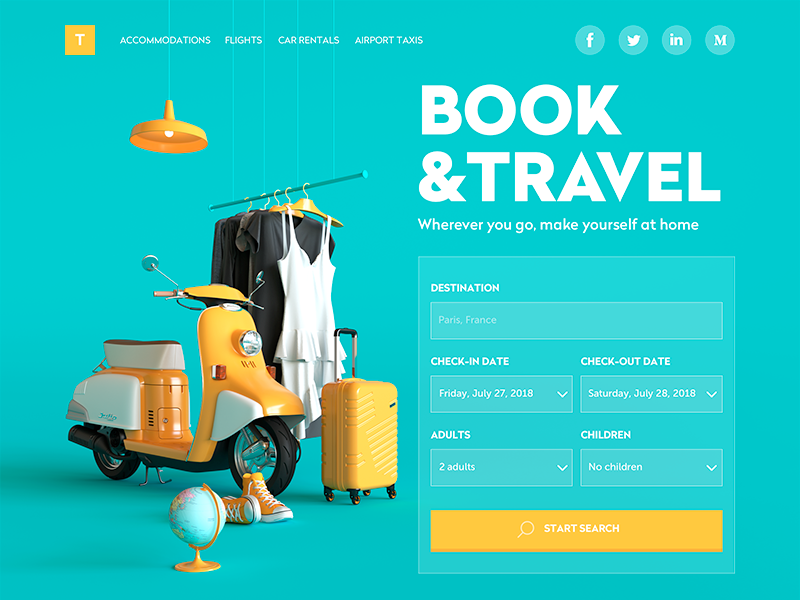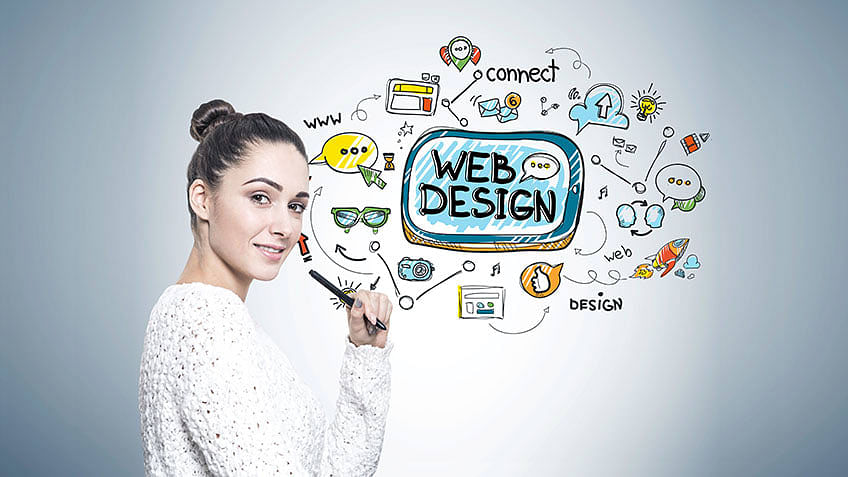Aligned Position Web Design: Comprehensive Web Design Solutions for Small and Large Businesses
Aligned Position Web Design: Comprehensive Web Design Solutions for Small and Large Businesses
Blog Article
The Most Effective Sorts Of Web Style to Boost User Experience and Engagement
In the ever-evolving landscape of electronic communication, the efficiency of Web layout dramatically impacts individual experience and involvement. Various layout approaches, such as minimal, receptive, and interactive layouts, each offer unique benefits that can deal with varied individual needs. Recognizing which kinds of website design best offer these goals can be pivotal for companies intending to enhance consumer fulfillment and retention. Nevertheless, the concern continues to be: which layout aspects really resonate with individuals and foster significant engagement? The expedition of these principles discloses essential insights that might redefine your strategy to website design.
Minimal Web Design
As digital landscapes end up being progressively messy, minimalist Web design has actually arised as a powerful approach to enhancing individual experience. This layout ideology focuses on simplicity, concentrating on crucial aspects while eliminating unneeded distractions. By using sufficient white room, simple navigating, and a minimal color combination, minimal style fosters clarity and directs customer attention to key web content.
The core principle of minimalist website design is to create a seamless communication for users. By minimizing cognitive tons, customers can quickly realize information without feeling overwhelmed. This direct technique not just boosts usability but also urges involvement, as visitors are a lot more most likely to explore a website that is aesthetically attractive and simple to browse.
Additionally, minimalist design usually stresses typography and images, making use of these elements tactically to communicate messages effectively. In significance, minimal Web style is not just a fad; it is a thoughtful approach that acknowledges the significance of user-centered style.
Receptive Web Style
In today's diverse electronic atmosphere, receptive website design has actually ended up being essential for developing a smooth user experience across a wide variety of devices. As individuals accessibility internet sites on mobile phones, desktops, laptops, and tablet computers, the capability of a website to adjust its format and web content to different display sizes and resolutions is essential.
Responsive website design uses versatile grids, photos, and CSS media inquiries to ensure that Web content is provided ideally, regardless of the tool made use of. This method not only improves the visual charm of a web site yet additionally considerably enhances functionality. Customers are more probable to involve with a site that provides a regular experience, as it gets rid of the irritation of needing to focus or scroll excessively.
Moreover, search engines, consisting of Google, prioritize mobile-friendly websites in search rankings. By taking on responsive design, organizations can enhance their presence and get to a broader audience. This method also streamlines web site upkeep, as a solitary variation of the website can accommodate all devices, decreasing the need for multiple variations. In summary, responsive website design is a basic practice that boosts user experience, interaction, and general satisfaction.
Interactive Web Style
Receptive website design lays the groundwork for boosting user experience, yet interactive website design takes this a step even more by engaging customers in a more vibrant way - Aligned Position Web Design. By incorporating components such as animations, clickable prototypes, and real-time comments, interactive Web style captivates individuals, drawing them right into a richer surfing experience
This method not just promotes interaction but likewise urges individuals to check out content actively instead of passively eating it. Strategies such as gamification, where customers gain rewards for finishing tasks, can dramatically boost the moment spent on a website and improve overall fulfillment. Interactive features can streamline complex info, making it much more pleasurable and absorbable.

Including interactive design components can likewise result in greater conversion prices, as individuals are extra most likely to engage with a website that proactively entails them. Aligned Position Web Design. Eventually, interactive Web layout changes customer experiences into remarkable journeys, guaranteeing that site visitors return time and once again
Apartment Layout
Defined by its minimalistic approach, flat layout emphasizes simpleness and capability, removing unnecessary aspects and concentrating on essential functions. This style approach prioritizes use, guaranteeing that users can browse interfaces with ease and efficiency. By using a clean visual, level design eliminates the mess often found in more elaborate designs, thus improving user emphasis on material and performance.
The hallmark of level design lies in its use bold shades, simple dig this typography, and geometric shapes. These elements contribute to an aesthetically enticing interface that is both contemporary and approachable. Furthermore, flat style fosters a sense of quality, enabling individuals to recognize necessary actions and info without interruption.
Additionally, level style is especially reliable in receptive Web layout, as its simpleness converts well across different devices and display dimensions. By focusing on necessary attributes, level design not only meets user requirements but also urges smooth interaction, making it an essential component of reliable Web design techniques.
Adaptive Website Design
Flexible website design personalizes the user experience by producing numerous fixed layouts customized to various screen sizes and tools. Unlike responsive design, which fluidly adjusts a single layout, flexible design employs unique formats for certain breakpoints, making certain ideal discussion on various systems. This strategy allows developers to concentrate on the one-of-a-kind characteristics of each gadget, boosting usability by delivering exactly what individuals require based on their context.
Among the main benefits of flexible website design is its ability to optimize load times and performance. By offering tailored content and photos that fit the customer's tool, sites can reduce data usage and improve loading speeds. This is particularly beneficial for individuals with slower links or minimal information plans.

In addition, flexible style assists in an extra controlled and regular branding experience. Because designers develop numerous layouts, they can make sure that the aesthetic aspects line up with the brand's identity across different platforms - Aligned Position Web Design. This leads to a natural individual experience, enhancing interaction and advertising individual retention
Conclusion
Finally, the assimilation of minimal, receptive, and interactive website design principles considerably enhances individual experience and involvement. Minimal layout promotes quality and emphasis, while receptive design ensures flexibility throughout numerous gadgets, promoting access. Interactive design mesmerizes customers with vibrant elements, motivating exploration and customization. Jointly, these style comes close to add to the creation of user-friendly environments that not only improve complete satisfaction however additionally drive higher conversion prices, emphasizing their crucial relevance in modern Web design techniques.

Minimalist design promotes quality and emphasis, while responsive design guarantees flexibility across various gadgets, advertising access. Collectively, these layout approaches add to the development of straightforward environments that not only boost contentment yet additionally drive higher conversion prices, read the full info here underscoring their crucial relevance in contemporary Web style strategies.
Report this page